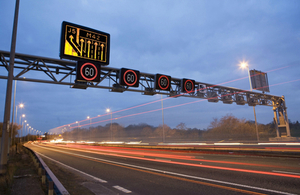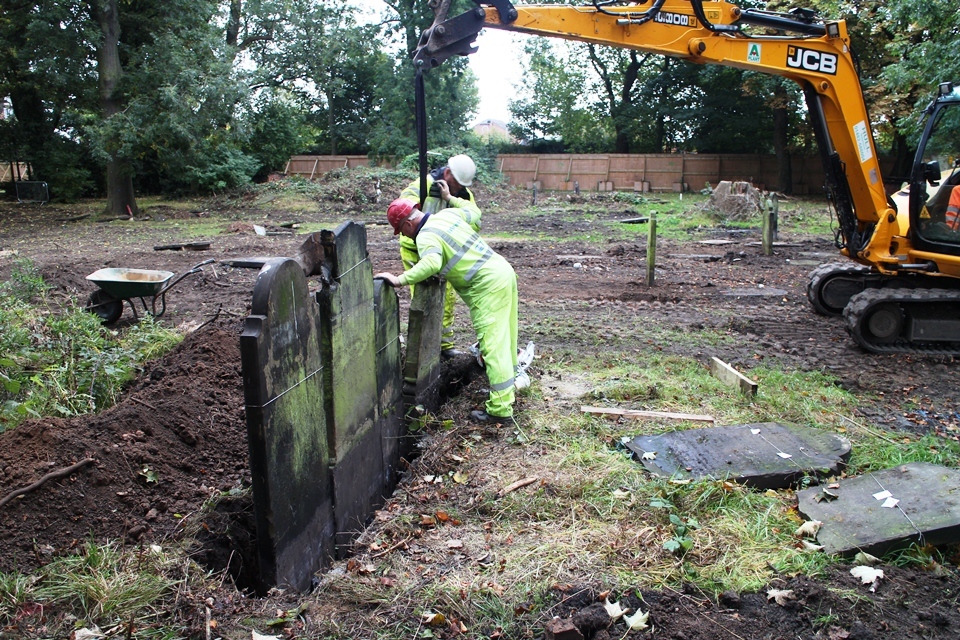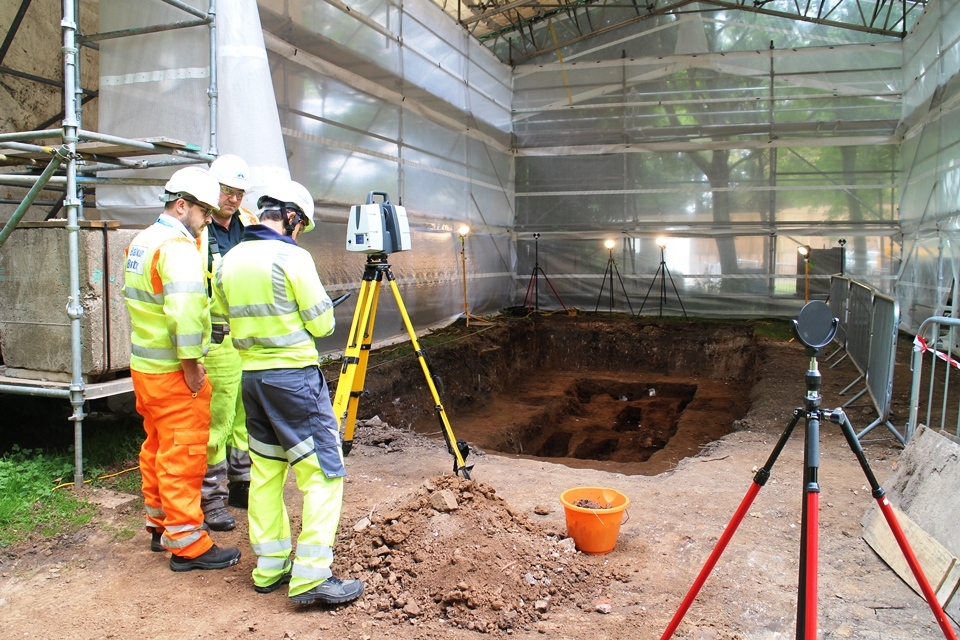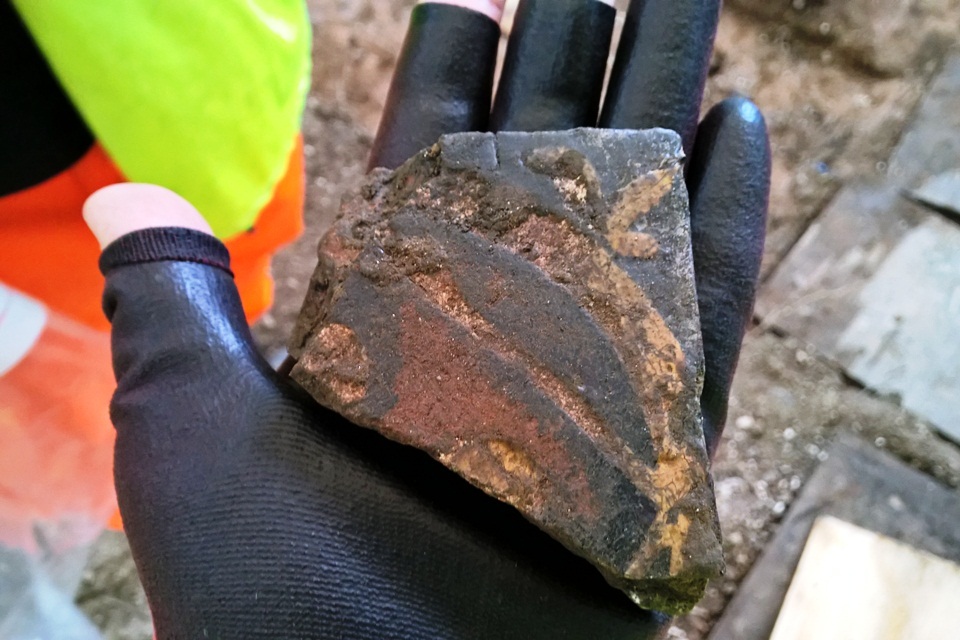Hull’s rich history uncovered at burial ground
Archaeologists helping to work up plans for a major upgrade of the A63 in Hull have uncovered a fascinating insight into the lives of the city’s population in the 18th and 19th centuries.

smart motorway img
The archaeologists have been carrying out investigations in the city’s Trinity Burial Ground to prepare for when the churchyard needs to be dug up as part of the scheme. A number of bodies will need to be exhumed while the scheme is carried out, and reburied when the project is completed.
Initial findings suggest that around 16,000 bodies will need to be exhumed, a task which is expected to be made easier by the ground conditions uncovered during the initial investigation work.
The testing phase has also provided valuable insight about the lives of those buried. Early findings suggest that a number of conditions were prevalent at the time, including arthritis and the spine condition spondylosis.
None of the skeletons could be identified but the team uncovered items including name plates, viewing panels and evidence of coffin handles. There were also various buttons, pins, clothing, shrouds and hair found.
And a medieval floor tile, which is thought to have been imported during 19th century work on the crypt at Holy Trinity Church in Market Place, was among the artefacts discovered.

Site specialists removing the gravestones
James Holmes, Highways England project manager, said:
“This scheme will be of huge benefit to Hull and it is important that we do this imperative preparatory work sensitively.
“Our primary thoughts have been with the families of those buried here and so we have worked closely with representatives from Holy Trinity Church and the Diocese of York as well as heritage bodies, such as Historic England, to ensure that all appropriate measures were in place for this work and is was carried out with full care and consideration.”
The burial ground opened in 1783 and was used by Holy Trinity Church until around 1860. Parish records reveal that up to 44,041 burials took place on the site until it was closed in 1861.

Laser scanning the findings in one of the archaeological trenches
The site was used intensively and numerous people were buried within each plot. Burials were placed at a relatively shallow depth due to high water levels in the area.
A total of 191 burials were uncovered during the investigation with the majority of skeletons belonging to children.
A team of archaeologists from Oxford Archaeology–Humber Field Archaeology – working on behalf of Highways England – worked closely with contractors, the Church of England and heritage bodies, such as Historic England, to ensure the investigations were carried out as respectfully as possible.
Archaeologist Stephen Rowland said:
“This project has given us a fascinating insight into the lives of people from all walks of life who lived in Hull, giving us a better understanding of how they lived, worked and interacted.
“We will continue to analyse our findings which will be used to help everyone have a better understanding of what life was like in Hull in the Georgian and Victorian periods.”
The excavated remains and artefacts have now been carefully reburied in their original locations. The burial ground will re-open to the public at the end of January 2016.
A specialist from the British Register of Accredited Monumental Masons was employed to safely remove the headstones, and is working on the site to replace them.

A medieval floor tile, which is thought to have been imported during 19th century work on the crypt at Holy Trinity Church in Market Place
Reverend Canon Dr Neal Barnes said:
“We have worked closely with the project team at Highways England to carry out the archaeology and ground investigation work sensitively.
“I would like to thank the public for their patience while the team restores the burial ground and we look forward to re-opening the site in January 2016.”
The A63 Castle Street scheme will improve access to the Port of Hull by widening some sections of the road, upgrading the Mytongate junction and building two new footbridges over the road.
The scheme also aims to help reduce the impact of the barrier caused by Castle Street between the city centre to the north, and the tourist and recreational developments to the south.
Key facts and figures:
- 195 headstones were removed and replaced.
- gravestone surveys were carried out on 305 different memorials to record key information such as symbols and iconography from the monuments.
- ground-penetrating radar surveys were carried out to detect remains of graves and vaults below the surface.
- the team used a combination of traditional methods and advanced technology – using a laser-scanner to produce digital data which will be analysed and enhanced to produce a 3D model of the site.
- four trenches were dug to understand more about the underground remains and 10 boreholes were drilled up to 40 metres deep to analyse the geology of the ground.
- alongside the historic remains, contractors also found syringes, a stolen wallet (which was handed back to the police) and 11 tonnes of rubbish collected by 4 men over 2 days from the site.
- more than 4,000 metres of brambles and old vegetation and 2 wind damaged trees were also removed from the site.
More information is available on the scheme website.
General enquiries
Members of the public should contact the Highways England customer contact centre on 0300 123 5000.
Media enquiries
Journalists should contact the Highways England press office on 0844 693 1448 and use the menu to speak to the most appropriate press officer.